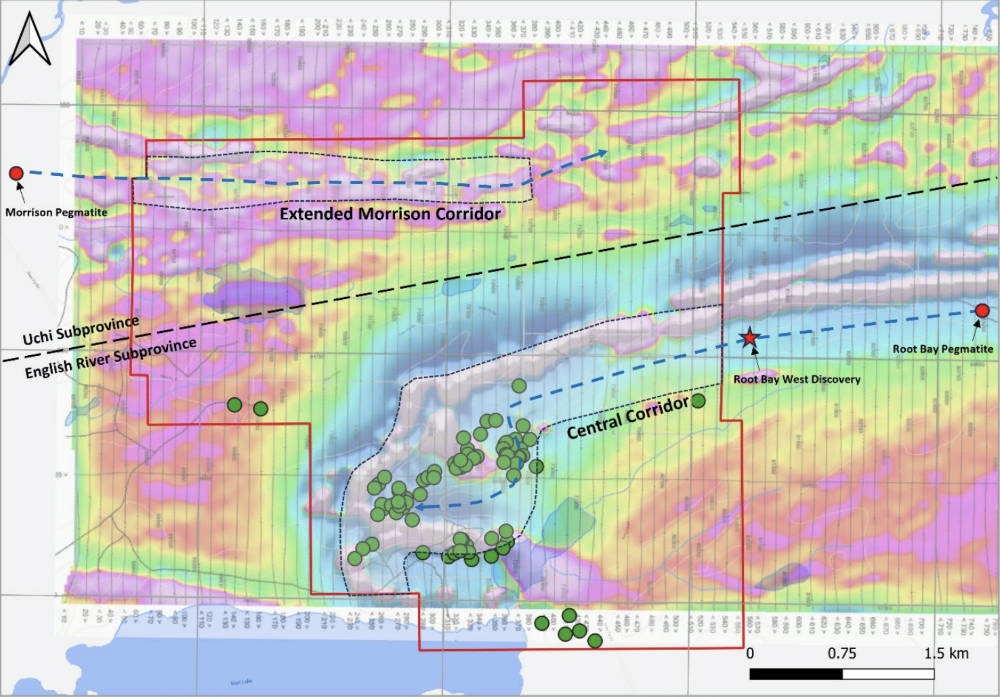Extensive Swarm: Pioneer’s Root Lake already exceeding expectations with discovery of 85 pegmatite outcrops
Mining
Mining
A maiden exploration program has already uncovered an extensive swarm of 85 pegmatite outcrops at Pioneer Lithium’s Root Lake project in Ontario.
The 1927 hectare Root Lake project is nestled between Green Technology Metals’ (ASX:GT1) advanced Root Bay and Morrison/McCombe lithium deposits in Ontario.
Notably, it hosts an area known as the Extended Morrison in its northwest, which could represent a continuation of GT1’s 4.5Mt Morrison/McCombe pegmatite system.
Pioneer Lithium (ASX:PLN), whose shares are already up 80% on its IPO price of 20c per share, chose to start its field work in the Extended Morrison area.
This initial work uncovered three pegmatite outcrops, interpreted to be open in multiple directions over a 3km strike length. The early discovery suggests that the company’s interpretation that it is a continuation of the Morrison/McCombe pegmatite system might just be on the money.

Field work has now uncovered 85 new pegmatite outcrops along the Central Corridor in the south-eastern portion of Root Lake, adjacent to GT1’s Root Bay pegmatite system.
These outcrops are up to 10m wide and exposed over lengths of up to 140m with larger outcrops standing as ridges above surrounding metavolcanic-sedimentary host rocks.
Mineral assemblages observed in the field include medium to coarse-grained crystals of potassium feldspar, albite, quartz and muscovite.
Additionally, widespread tourmaline, as well as minor occurrences of other accessory minerals fluorapatite, garnet and beryl that are commonly associated with lithium-caesium-tantalum (LCT) pegmatites and indicators of granite fractionation, have also been identified.
“The geological structure of the hook section in the Central Corridor has presented as a highly prospective area and one that we have been keen to explore,” says Pioneer Lithium chief executive officer Clinton Booth.
“With the extensive clearing and good accessibility in this Central Corridor, our expectations for the potential discovery of large pegmatite outcrops have well and truly been exceeded.
“We are looking forward to the team completing the fieldwork campaign in the coming week as they move eastwards towards GT1’s Root Bay discovery.”
Field work has now moved onto the eastern portion of the project area, adjacent to GT1’s Root Bay pegmatite system.
This article was developed in collaboration with Pioneer Lithium, a Stockhead advertiser at the time of publishing.
This article does not constitute financial product advice. You should consider obtaining independent advice before making any financial decisions.